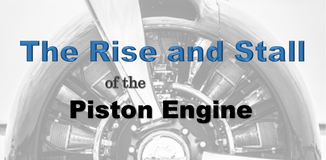Home

Welcome! This is where you can read or download a free copy of The Rise and Stall of the Piston Engine. Price published the book in this format because it contains over 250 photographs, drawings and charts that are crucial to your understanding of the events. There is no way that he could ever get permission from all the sources, so that is why it is offered free with no profit motive.
Get ready for a revelation about car ownership by taking a quick tour of this book, because the automobile industry is not what you’ve been taught in school nor via movies and television.
Kenneth M. Price Jr. , the author of The Rise and Stall of the Piston Engine doesn’t waste time getting to the point and he doesn’t mince words. As a result of reading just the first few pages, many will be surprised, shocked and even a little dismayed by what they see and learn. Part of this learning comes in the form of pictures and discussions of past verses current models, many of which offered superior vehicle performance. For example, at the dawn of the petroleum-powered era there were simple known methods to reduce fuel consumption by fortifying petroleum distillates with ingredients that were cheap and readily available. And although they had been researched and tested to be successful, their potential benefits to the overall performance of the transportation systems were to be buried and forgotten. This was all because of one reason: they all significantly reduced fuel consumption.
The Rise and Stall of the Piston Engine documents the “evolution” of the gasoline piston engine and in the process exposes the design for what it is; a heavy iron mechanism that consumes excessive amounts of gasoline while wearing itself out from relentless friction. In the process hundreds of better engine designs and fuel types were covered up, even at the expense of the inventor's life if necessary.
It might be hard to stomach the fact that today’s modern petroleum powered piston engine under performs virtually every other design that has been available for production and implementation for over 120 years. So where do we go from here, for if we don’t wake up fast, Americans are going to remain slaves to an antique system we never should have built in the first place.
Self-driving cars will only serve to distract the public. They will not help repair our outdated highways and bridges nor will they promote a more efficient system. They will merely mask the continued use of petroleum burning engines, thus helping to maintain the continued use of a toxic fuel along with outdated high-friction piston engines. We must not let them effectively market this flawed system to the public! We deserve better!
Much can be brought to light that will help us see the kind of transportation system we should really have. We can’t go on with this black top madness much longer. In the meantime, the right knowledge can help you save tens of thousands of dollars on needless automobile expenses. This equates to freedom from banks and alternatives to the toxic oil industry.
Be sure to read or download this book.
Get ready for a revelation about car ownership by taking a quick tour of this book, because the automobile industry is not what you’ve been taught in school nor via movies and television.
Kenneth M. Price Jr. , the author of The Rise and Stall of the Piston Engine doesn’t waste time getting to the point and he doesn’t mince words. As a result of reading just the first few pages, many will be surprised, shocked and even a little dismayed by what they see and learn. Part of this learning comes in the form of pictures and discussions of past verses current models, many of which offered superior vehicle performance. For example, at the dawn of the petroleum-powered era there were simple known methods to reduce fuel consumption by fortifying petroleum distillates with ingredients that were cheap and readily available. And although they had been researched and tested to be successful, their potential benefits to the overall performance of the transportation systems were to be buried and forgotten. This was all because of one reason: they all significantly reduced fuel consumption.
The Rise and Stall of the Piston Engine documents the “evolution” of the gasoline piston engine and in the process exposes the design for what it is; a heavy iron mechanism that consumes excessive amounts of gasoline while wearing itself out from relentless friction. In the process hundreds of better engine designs and fuel types were covered up, even at the expense of the inventor's life if necessary.
It might be hard to stomach the fact that today’s modern petroleum powered piston engine under performs virtually every other design that has been available for production and implementation for over 120 years. So where do we go from here, for if we don’t wake up fast, Americans are going to remain slaves to an antique system we never should have built in the first place.
Self-driving cars will only serve to distract the public. They will not help repair our outdated highways and bridges nor will they promote a more efficient system. They will merely mask the continued use of petroleum burning engines, thus helping to maintain the continued use of a toxic fuel along with outdated high-friction piston engines. We must not let them effectively market this flawed system to the public! We deserve better!
Much can be brought to light that will help us see the kind of transportation system we should really have. We can’t go on with this black top madness much longer. In the meantime, the right knowledge can help you save tens of thousands of dollars on needless automobile expenses. This equates to freedom from banks and alternatives to the toxic oil industry.
Be sure to read or download this book.

